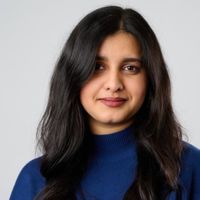Most common Amazon scams to avoid
Scammers use every trick in the book to convince you that a phone call or message is genuinely from Amazon. Here are some common scams doing the rounds and how to avoid them.


Scams are on the rose, with Amazon currently as one of the biggest.
From pension scams to banking app fraud and AI scams, an increasing number of people are being targeted for their money and personal details.
Fraudsters are also frequently copying the e-commerce giant Amazon due to its massive customer base and brand familiarity.
MoneyWeek
Subscribe to MoneyWeek today and get your first six magazine issues absolutely FREE

Sign up to Money Morning
Don't miss the latest investment and personal finances news, market analysis, plus money-saving tips with our free twice-daily newsletter
Don't miss the latest investment and personal finances news, market analysis, plus money-saving tips with our free twice-daily newsletter
With millions of customers and subscribers to its Prime delivery and Amazon Prime video services, scammers regularly target Amazon customers through cold calls and phishing emails.
These deceptive tactics aim to capture sensitive personal information, such as bank and credit card details from users.
Because of this, it’s important to be on the lookout for any potential frauds.
Here are some of the most common Amazon scams to know about and how to keep your money safe.
Amazon Prime cold call scam
If you receive a phone call from someone pretending to be from Amazon, be on your guard. It could be from a scammer and is a call that has been plaguing UK consumers for years.
The calls usually come from an unrecognised number. When you pick up, you’re told that your Amazon Prime subscription is about to end or that it’s facing a price hike. You’ll be tricked into installing malware and giving scammers control to your device.
How can you tell if a call from Amazon is genuine? Amazon doesn’t ask customers to disclose or verify sensitive personal information. If you ever encounter such calls, simply report them or block the number for suspicious activity.
Fake Amazon ‘locked account’ email scam
Fake emails look like they are from Amazon’s customer care service, but aim to steal personal details. These emails tell you that your account has been ‘locked’ and that you must take urgent action to verify it.
Fraudsters make it look convincing with a button designed to take you to a website that then has nothing to do with Amazon. It then encourages you to enter your login information, billing address and/or card details into a fake login screen.
Such phishing mails might be difficult to notice, but it’s worth double-checking them instead of losing your money.
Think about this: has the email arrived from a genuine Amazon email address? Does the text have any spelling and grammatical errors? Is it linking to a website that isn’t Amazon’s usual domain name?
Once you’ve asked yourself these questions, you may notice tiny errors that are a giveaway to being a fake email.
Fake Amazon ‘order’ email scam
This works a lot like the fake ‘locked account’ email as scammers tend to send fake emails confirming an order.
Their tactic relies on you panicking about being charged for an order that you didn’t place. What they hope you do is click on the email and land directly into their fraud pit.
However, you should take the time to assess the email before making any hasty decisions.
Visit the official Amazon website through a separate browser window and log in as usual. Check if any orders on your account match the one that the email is telling you about. If not, the email is most certainly a fake.
If you’re unsure, reach out to Amazon directly through its official channels and try your best to avoid any interaction with the suspicious email.
An Amazon spokesperson said: “We’ve introduced email verification technology for emails sent by Amazon to protect customers from phishing scams.
“For customers with email clients supporting the technology, including many of the large providers – Gmail, Yahoo! and AOL – emails from Amazon will now include our ‘Smile’ logo in thumbnails, indicating that they’ve passed security checks.
“If customers see the ‘Smile’ logo next to emails coming from an @amazon.co.uk sender, that will indicate that the email is genuinely from Amazon.”
Amazon gift card scam
Many scammers also send emails claiming you’ve won a gift card or some sort of reward.
Action Fraud has received hundreds of reports about these fake gift card emails, which contain links to phishing websites aiming to steal your personal and financial information.
Keep in mind that Amazon will not randomly give you a gift card. If you think it’s too good to be true, you are most probably correct. On inspecting these emails closely, you’ll mostly spot signs they’re fake, similar to other ‘locked account’ or ‘delivery’ mails.
Amazon has more information about how to spot common gift card scams.
Fake Amazon texts scam
Although less prevalent than other Amazon scams, fraudsters sometimes try to entice individuals to counterfeit websites through SMS text messages. Similar to phishing emails, these websites redirect users to pages unrelated to Amazon, often soliciting sensitive data like Amazon passwords.
These are similar to phishing emails as these websites redirect users to pages that have nothing to do with Amazon. Instead, your sensitive information such as your Amazon password, address and card details end up at risk.
Amazon says it will never request passwords or personal information via text message or ask you to make a payment outside of the official website. If you receive such a text, avoid clicking on the link and instead verify any issues directly with Amazon.
To report a phishing SMS, you can contact Amazon or Action Fraud.
Fake Amazon unclaimed packages scam
There are a lot of websites that promote fake ads offering to sell unclaimed Amazon packages at huge discounts.
Such ads may say: “It’s the best time of the year to buy Amazon unclaimed packages”, “amazing value” or “If they go unclaimed for 3 months, we sell them at 80% off!”
Given the volume of unwanted and returned items Amazon has, people might get tempted to click on these ads. However, Amazon has confirmed that these ads are not associated with the company, and are most likely to be a scam.
Should you encounter such posts on your social media channels such as Facebook, avoid clicking on any links or making any purchases through these as it could result in you paying for merchandise that never arrives.
Worst-case scenario, your credit/debit card information will be shared with scammers who may drain your account or download malware onto your device.
If you’re wondering what the fate of such unwanted Amazon items is, Amazon works with liquidators in both Europe and the US to sell excess stock.
Amazon ‘brushing’ or unsolicited packages scam
Brushing is when a customer receives a package they didn’t order. Sellers on Amazon’s marketplace send people parcels that weren’t paid for in order to boost their online presence.
This way, the seller’s ratings or scores go up and it makes them appear more popular and trustworthy.
According to consumer group Which?, one million UK households were affected by brushing in 2021.
Amazon says the packages are being sent to publicly available names and addresses. So, while there’s no obvious sign your personal data has been breached – and this isn’t a ‘scam’ in the traditional sense – the unsolicited packages can quickly become a nuisance with some households inundated with unwanted items.
According to Amazon, third-party sellers are prohibited from sending unsolicited packages to customers. Amazon says these deliveries should be reported immediately via its Customer Service, but there’s no need to return the item.
Amazon says it will take appropriate action against those that violate its policies. This could include suspending or removing selling privileges, withholding payments and even working alongside the police.
An Amazon spokesperson said: “Third-party sellers are prohibited from sending unsolicited packages to customers, and we take action when our policies are violated, including by withholding payments, suspending selling privileges, and reporting bad actors to law enforcement.”
If you’ve received a package you didn’t order, first confirm it wasn’t a gift from any of your friends or family. If that’s not the case, report the package to Amazon online.
What to do if you’ve been scammed
If you think you may have given your banking or card details away to scammers, you should let your bank know what’s happened immediately. Most of the big banks participate in the Stop Scams UK scheme, so call their 159 hotline first. Alternatively, call your bank on its official fraud hotline.
The bank should work with you to get your money back after a scam, but this will vary depending on how the scammer stole your money.
You should also report the incident to Action Fraud via its website or on 0300 123 2040.
Two-factor authentication
Amazon accounts support two-factor authentication (AKA two-step verification), which adds a layer of extra security to your account when you log in.
With two-factor authentication enabled, Amazon will request that you also enter a security code after entering your password. This security code is sent by text message to your phone or can be generated via your own authenticator app. Here’s Amazon’s guide to two-step verification.
This will ensure that even if someone has gained access to your password, they won’t be able to proceed without the security code.
Experts recommend that you switch on two-factor authentication for any of your accounts where it’s an option, but especially accounts that hold sensitive information.
How to report Amazon scams
Amazon has a dedicated page explaining how you can report suspicious phone calls, emails or text messages:
For ‘brushing’ fraud specifically, it encourages you to report to its Customer Service.
Outside of Amazon directly, phishing emails can be reported to the National Cyber Security Centre (NCSC) on report@phishing.gov.uk.
The NCSC can then work to remove the fake websites that phishing emails link to.
Amazon has recently issued advice via email to customers containing four rules to follow if you’re unsure about a communication you’ve received:
- Never feel pressured to give information (such as your credit card number or account password) over the phone, especially if the call was unexpected.
- Never pay over the phone. Amazon will never ask you for payment over the phone.
- Trust Amazon-owned channels: always go through the Amazon app or website when seeking customer support.
- Be wary of false urgency: be wary if someone tries to convince you to ‘act now’.
Get the latest financial news, insights and expert analysis from our award-winning MoneyWeek team, to help you understand what really matters when it comes to your finances.

Oojal has a background in consumer journalism and is interested in helping people make the most of their money.
Oojal has an MA in international journalism from Cardiff University, and before joining MoneyWeek, she worked for Look After My Bills, a personal finance website, where she covered guides on household bills and money-saving deals.
Her bylines can be found on Newsquest, Voice.Cymru, DIVA and Sony Music, and she has explored subjects ranging from politics and LGBTQIA+ issues to food and entertainment.
Outside of work, Oojal enjoys travelling, going to the movies and learning Spanish with a little green owl.
-
 The MoneyWeek investment trust portfolio – early 2026 update
The MoneyWeek investment trust portfolio – early 2026 updateThe MoneyWeek investment trust portfolio had a solid year in 2025. Scottish Mortgage and Law Debenture were the star performers, with very different strategies
-
 Nobel laureate Philippe Aghion reveals the key to GDP growth
Nobel laureate Philippe Aghion reveals the key to GDP growthInterview According to Nobel laureate Philippe Aghion, competition is the key to innovation, productivity and growth – here's what this implies for Europe and Britain